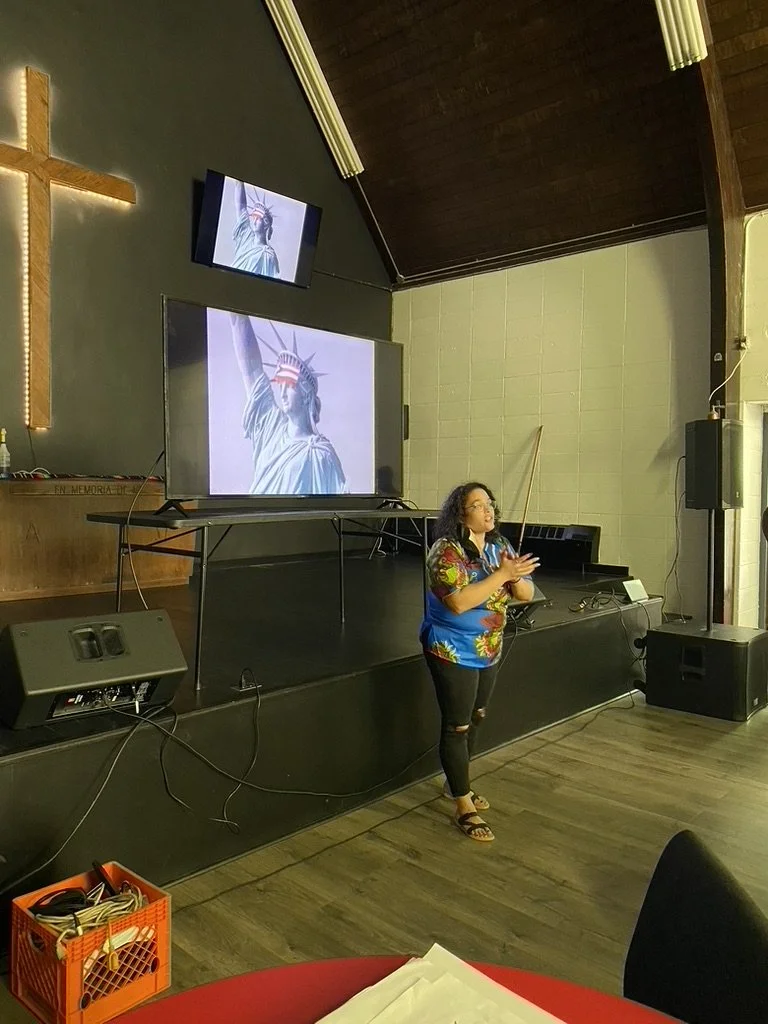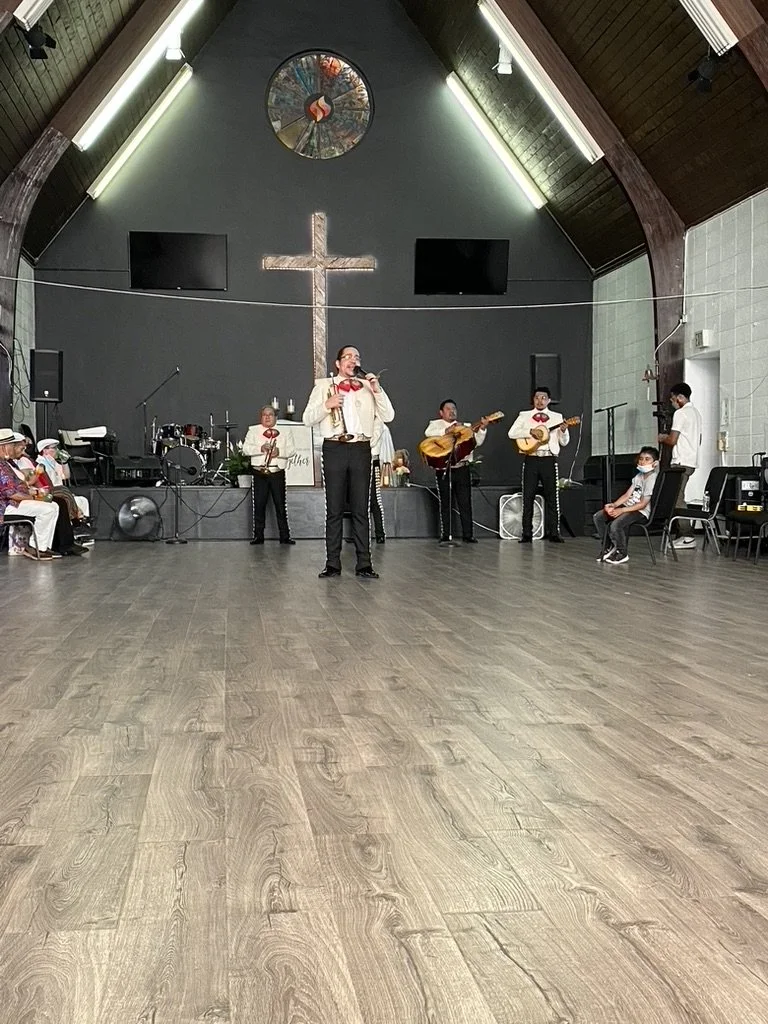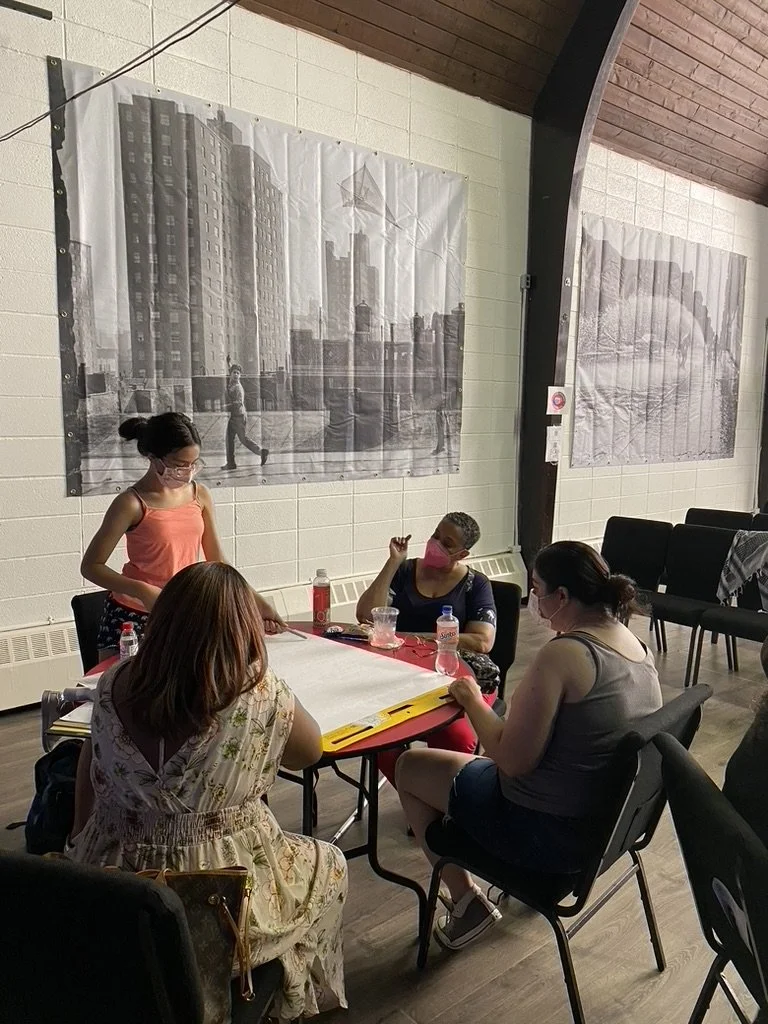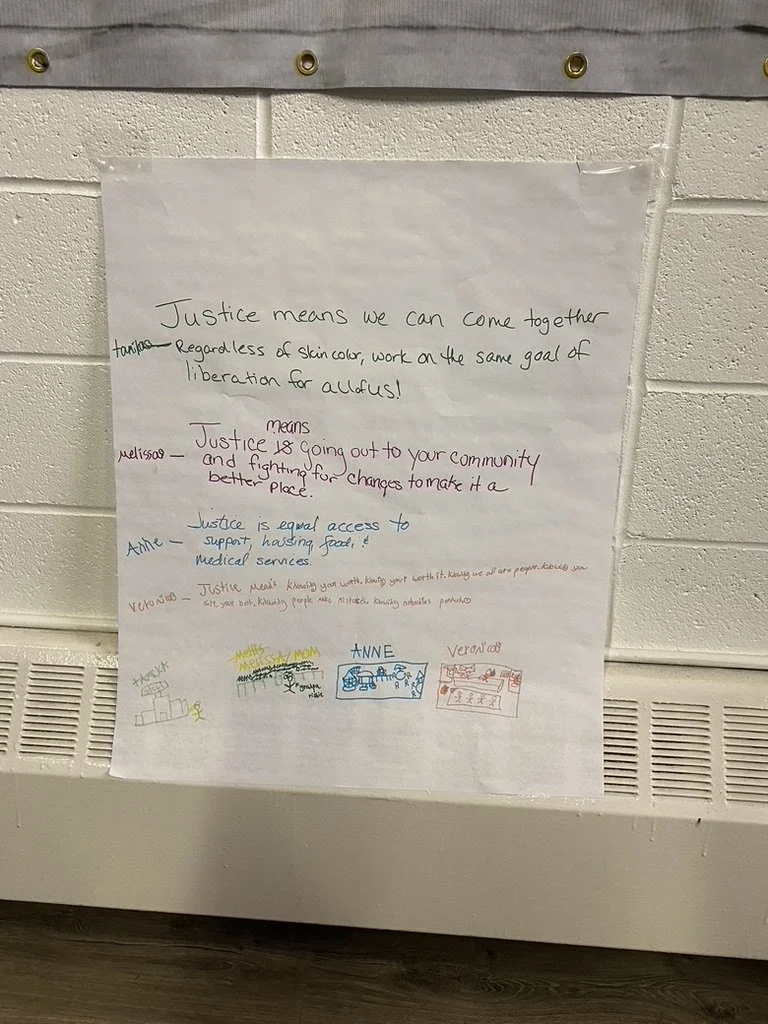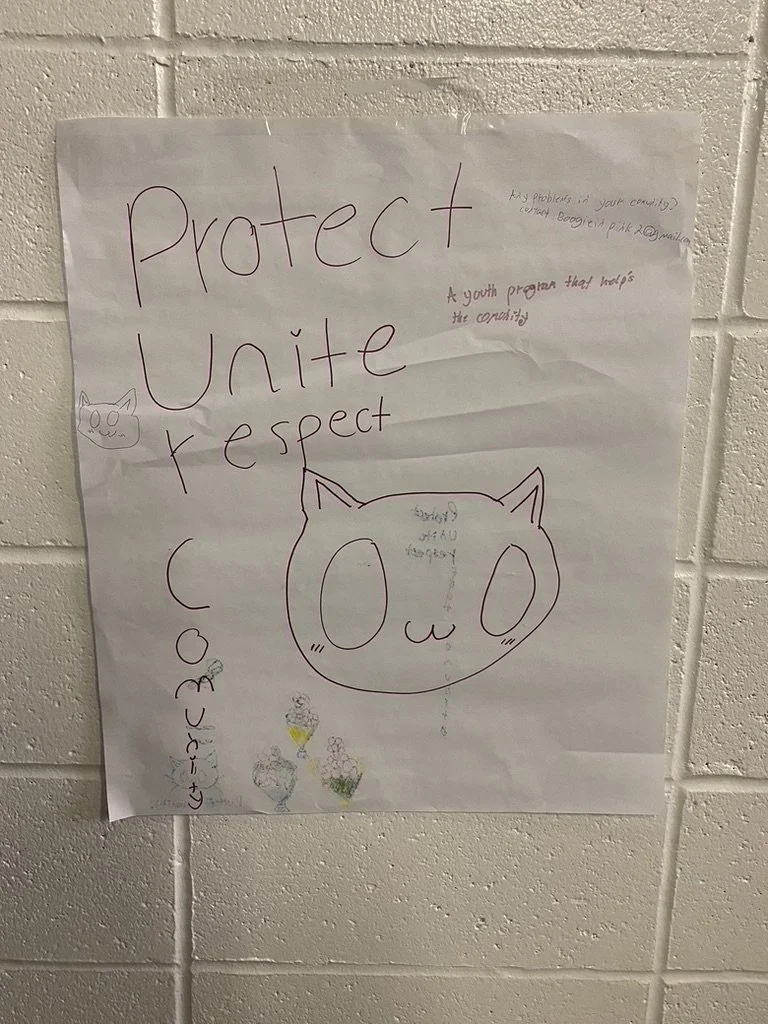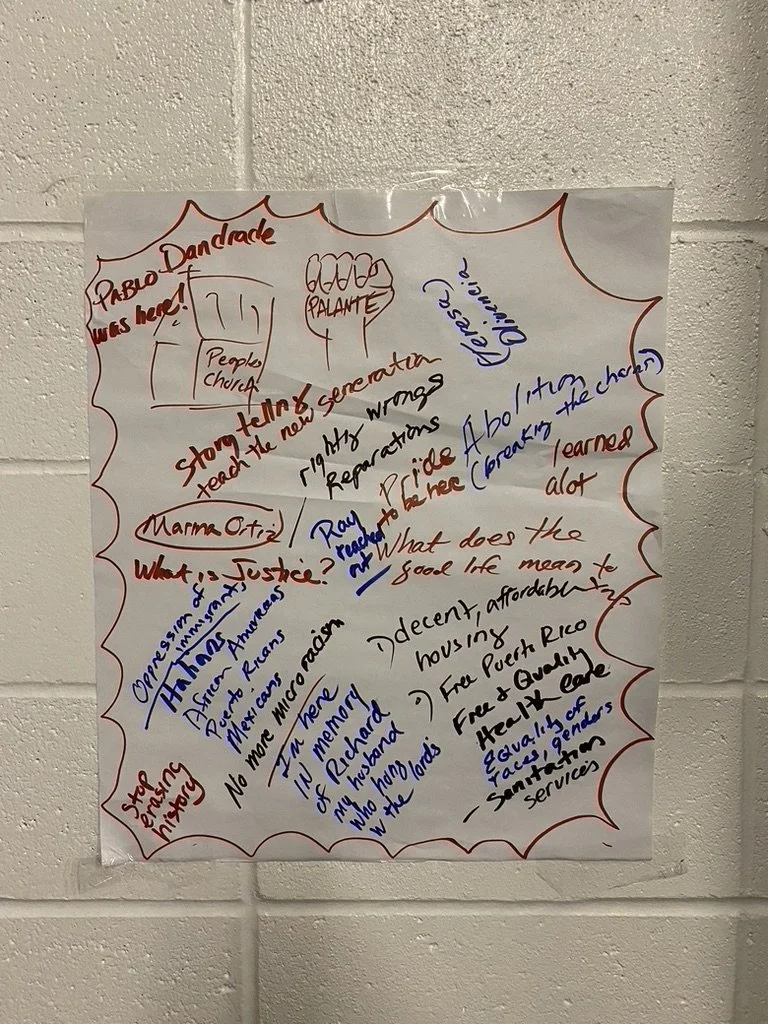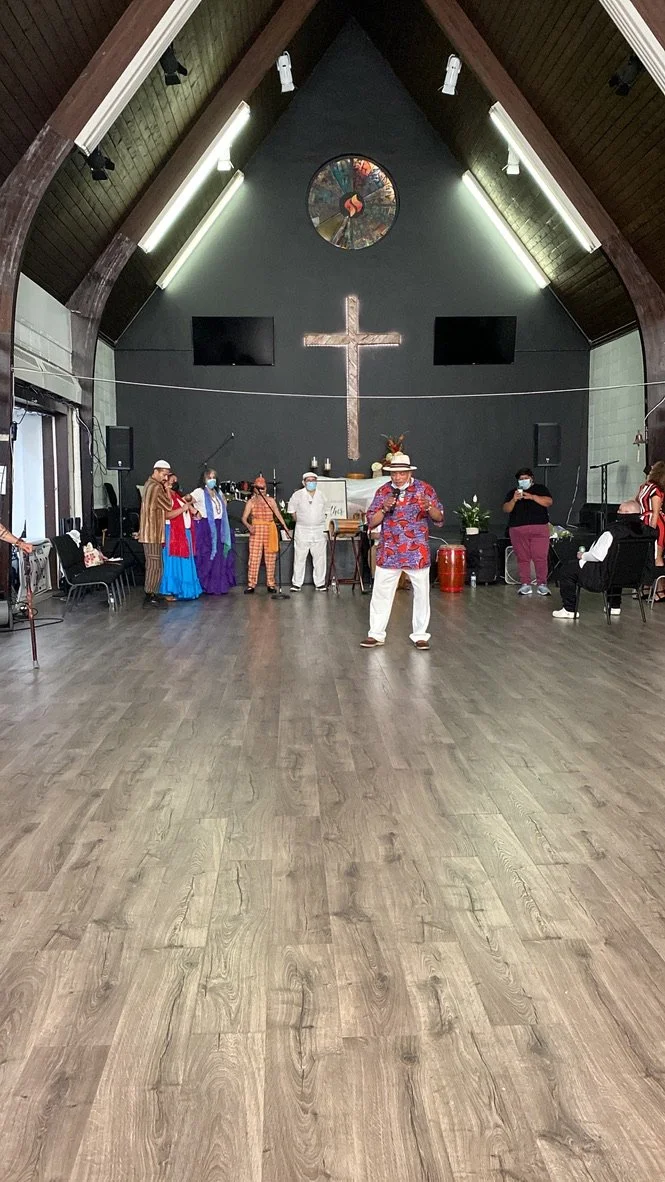NEW YORK FSUMC—The People’s Church Centennial Anniversary
A collaboration with Jorge Juan Rodríguez V and First Spanish United Methodist Church (“The People’s Church”)
The FSUMC—The People’s Church Centennial Anniversary sought to explore how religion functions in New York City through the 100 year anniversary celebration of a key religious institution in East Harlem: The First Spanish United Methodist Church, a.k.a. The People’s Church and now formally called “FSUMC—The People’s Church.” This is a historic Latinx church in New York City that was founded in 1922 and served as a refuge for many Spanish speaking migrants to the city, especially Puerto Ricans. Yet it gained notoriety through an occupation in 1969 by a radical group of largely Puerto Rican youth called the Young Lords who sought to use the church’s building to provide free breakfast for neighborhood children as well as establish a clothing drive and provisional shelter for individuals experiencing homelessness. This occupation, which came after months of failed negotiations with the church leadership, brought national attention to the organization, the church, and led to a national debate on the function of religion in society. Today, the church serves as a key community service site in East Harlem and a place of spiritual rejuvination with COVID testing and vaccination, an accupuncture clinic, food drives, self defense classes for women and children, zumba classes, direct actions against police brutality, colonialism in Puerto Rico, and the blockade against Cuba, as well as Sunday services that welcome people from all walks of life to hear from messages centered around liberation theology and have a moment of prayer, reflection, and community building.
The Centennial Celebration included a live salsa band, a church service, and a block party with Bomba, Mariachi, and hip hop. It was kicked off, however, by a screening of the documentary “¡Palante, Siempre Palante!” which documents the activism of the Young Lords. This screening, sponsored by the CSRC, was followed by a community conversation where an intergenerational group of individuals (with ages ranging from 10 to 70) were split into groups and asked to reflect on their vision of justice and how it is similar or different from the Young Lords. They were then invited to draw, in groups, their image of “the good life.” Each group presented their vision which included clean air, housing for all, etc. and from these presentations a community conversation emerged about how the issues faced by the Young Lords in the 1960s and 70s continue to be faced by the East Harlem community today. Community members, however, cited the ways FSUMC—The People’s Church provided a site for people from all faith traditions to come and “care for the least of these”—a central conception of religiosity expressed by members.
Religion in New York
There are many ways to discuss religion in New York City. We could provide a statistical analysis akin to the Public Religion Research Institute (PRRI) that notes that 59% of adults in the New York City Metro area are Christian, 8% Jewish, 2% Muslim, or 15% “nothing in particular.” We could, alternatively, historically explore how decades of political, racial, and religious work have constructed an imaginary of cities, generally, and New York City, in particular, as a “godless” place. Or we could, as is my preferred approach, build on the work of Robert Orsi and Alyssa Maldonado-Estrada and explore how religion is everywhere in this city as people use religious language, clothing, and ideas available to them in culture to make meaning in their everyday lives. While understanding what people believe is important for understanding religion, we can learn so much about this city by sitting exploring the city blocks and examining the religious artifacts people carry with them and leave behind.
The city’s magnificent green spaces like Inwood Hill Park and the Bronx’s Van Cortlandt Park are often home to the ritual spaces of several faith traditions. Lenape who continue their sacred connection to the earth through these hallowed grounds, Pagans who have found new connection to the earth under the leaf covered canopies, and even the possible emergence of new religious traditions which bring together the faiths of people’s ancestors. Take the subway and you will encounter an Imam holding their prayer beads closely, a Santero wearing all white, a street preacher speaking of the impending apocalypse between Subway cars, a Jewish family on their way to synagogue, and an Irish Catholic on their way from confession. And walk the streets of the five boroughs and watch as people pour out libations for Biggie Smalls and Big Pun—their music offering a kind of urban hymn in the background over a Sony bluetooth speaker—before you run into prayer candles lit under murals of those taken too soon.
We could tell a story of religion in New York City with statistics about what people do and don’t believe. But if you want to learn about religion in New York City join me on the subway, walk with me through the woods, sit in front of the murals, and explore the ways the ineffable lives through these streets.
Images from the Project

Suggested Readings & Resources
Johanna Fernández, The Young Lords: A Radical History (Chapel Hill, NC: The University of North Carolina Press, 2020).
Felipe Hinojosa, Apostles of Change: Latino Radical Politics, Church Occupations, and the Fight to Save the Barrio (Austin, TX: University of Texas Press, 2021).
Felipe Hinojosa, Maggie Elmore, and Sergio M. González, eds., Faith and Power: Latino Religious Politics Since 1945 (New York: New York University Press, 2021).
Jennifer S. Lee, “The Young Lords’ Legacy of Puerto Rican Activism,” New York Times (August 24, 2009).
Alyssa Maldonado-Estrada, Lifeblood of the Parish: Men and Catholic Devotion in Williamsburg, Brooklyn (New York: New York University Press, 2020).
Iris Morales, ed., Through the Eyes of Rebel Women: The Young Lords, 1969-1976 (New York, NY: Red Sugarcane Press, 2016).
Robert A. Orsi, The Madonna of 115th Street: Faith and Community in Italian Harlem, 1880-1950, 3rd edition (New Haven, CT: Yale University Press, 2010).
Jacob Passy, “NYC Street Renamed for ‘Young Lords’ Puerto Rican Activists,” NBC News (July 25, 2014).
Jorge Juan Rodríguez V, “The Afterlives of the Young Lords” (essay)
Darrel Wanzer-Serrano, The New York Young Lords and the Struggle for Liberation (Philadelphia, PA: Temple University Press, 2015).
Meet the Team
Associate Director for Strategic Programming at the Hispanic Summer Program and Visiting Assistant Professor of Historical Studies at Union Theological Seminary
Dr. Jorge Juan Rodriguez V, the son of two Puerto Rican migrants, grew up with his parents, grandmother, and uncle in a small affordable housing community in urban Connecticut. His story of diaspora, translanguaging, race, and religion propelled his academic journey, leading him to degrees in biblical studies, social theory, liberation theologies, and a Ph.D. in History from Union Theological Seminary. His scholarship examines the intersections of race, religion, and social movements with a particular focus on Black and Brown religious activism in the 20th century including groups like the New York Young Lords. Dr. Rodríguez is an administrator and educator. In addition to his role as Visiting Assistant Professor of Historical Studies at Union Theological Seminary, Dr. Rodriguez serves full-time as the Associate Director for Strategic Programming at the Hispanic Summer Program—a nonprofit that creates year-round educational spaces for Latinx graduate students of religion. Additionally, Dr. Rodríguez frequently consults with universities and organizations across the country to help them imagine and build more just economic, curricular, and labor systems in their institutions.
@jjrodv (Twitter and Medium) / www.jjrodriguezv.com
Dr. Jorge Juan Rodríguez V
Senior Pastor of FSUMC—The People’s Church
Rev. Dorlimar Lebrón Malavé is a 1.5 generation Puerto Rican born on the island and raised in New York City. She currently serves as Senior Pastor of the historical First Spanish United Methodist Church, commonly known as FSUMC—The People’s Church in East Harlem, New York City.
Rev. Dorlimar Lebrón Malavé
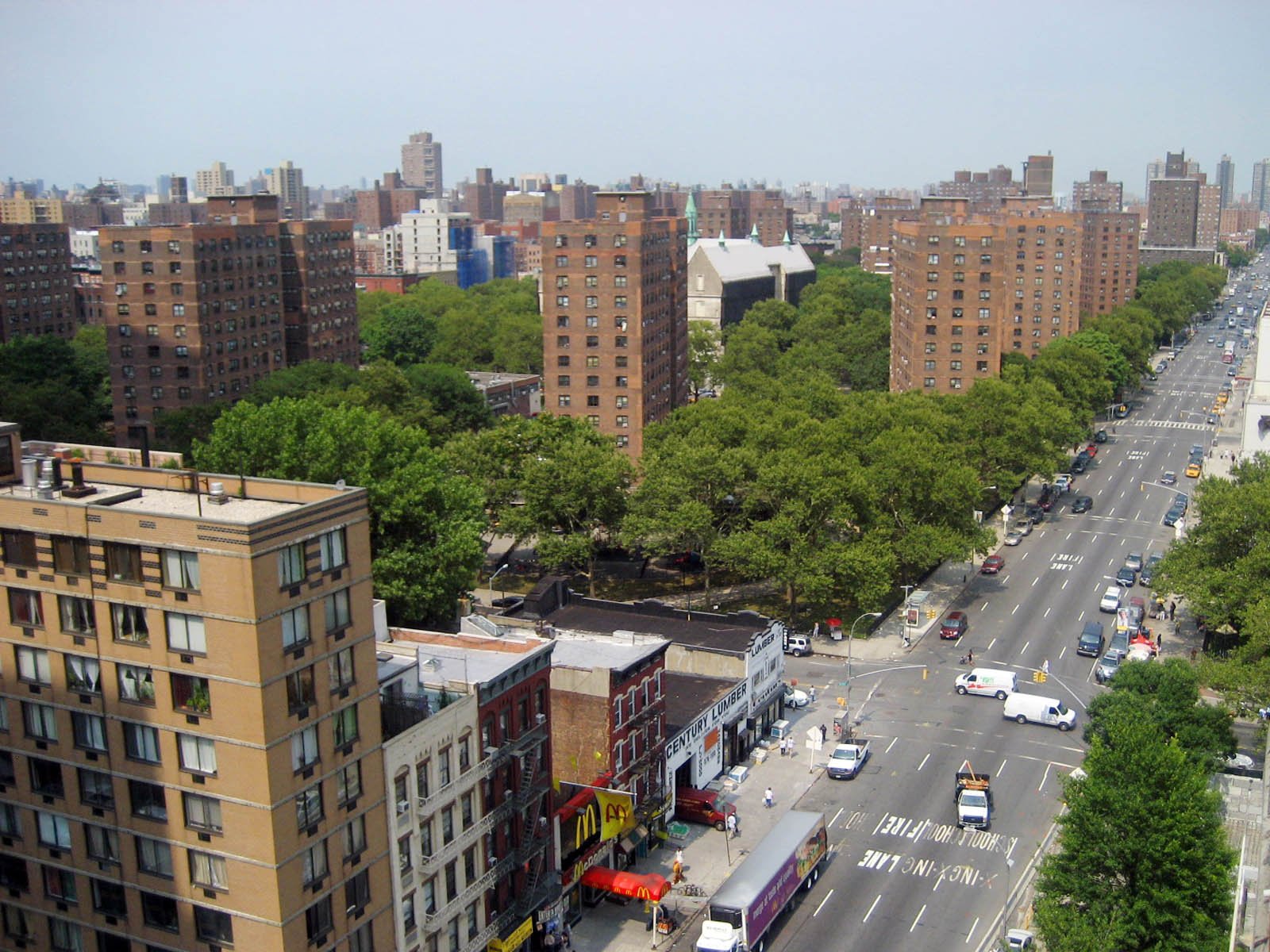
Statement of Gratitude
This project was conducted in collaboration Rev. Dorlimar Lebrón Malavé, Dr. Jorge Juan Rodriguez V, the East Harlem Community Partnership, the United Methodist City Society, Meadville Lombard Theological School, IFCO Pastors for Peace, the Unitarian Universalist Service Committee, Union Settlement, East Harlem Preservation, the Greater Harlem Parish, We Are El Barrio, the Hispanic Summer Program, the Hispanic Youth Leadership Academy, and various community partners in East Harlem. In addition to those who sat with us for interviews or contributed written reflections, our team wishes to express gratitude to: Tanya and Raymond Perez, Amir Tawfiyq Aziz El (a.k.a. Dr. Shaku Zulu), Rita Cordova-Padron, Audrey Oquendo, Rev. Ian Harris, and Rev. Jonathan Cintrón, each of whom provided significant logistical or other types of support to make this project a reality.
Our Good Life Project was seeded by Harold Morales, Rupa Pillai, and Kayla Wheeler with support from Amrita Bhandari, Ariel Mejia, Sierra Lawson, Fatima Bamba and many others from the Center for Religion and Cities’ collective.
The work is supported through generous funding from Morgan State University and the Henry Luce Foundation.
The city of New York occupies the traditional and unceded lands of the Wappinger, Schaghticoke, and Munsee Lenape people. The CRC invites you to join us to learn about the Indigenous history of and contemporary context of Native groups in the lands we live and work on.


